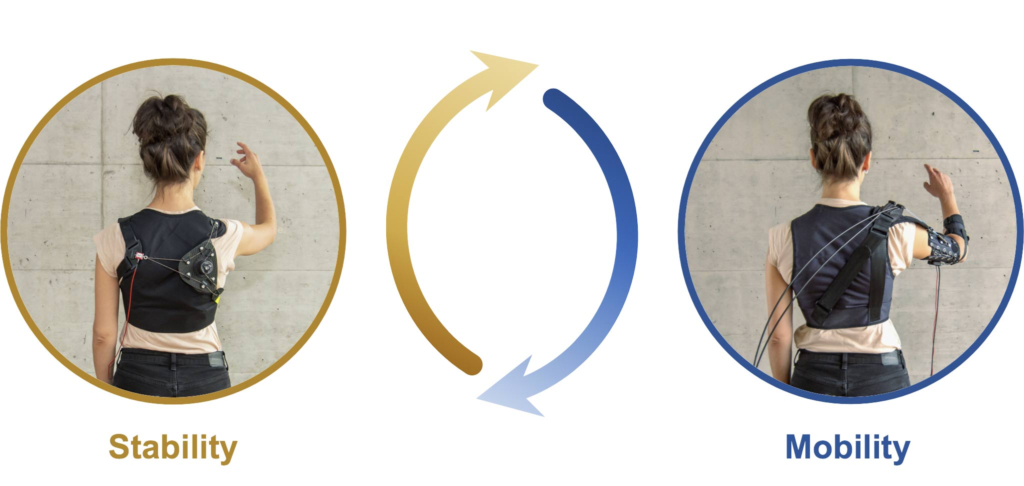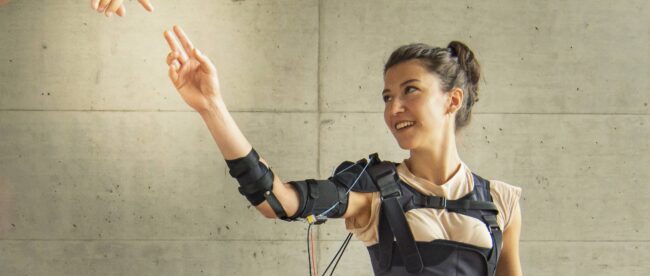Myoshirt Is A Lightweight, Wearable Exoskeleton Prototype For Upper Body Strength
Our daily chores and activities require the use of our arms and in several cases, decent amount of strength. In many cases, individuals lose strength in their arms because of various disorders like muscular dystrophies, traumatic incidents like strokes or simply aging. To make up for lost strength, researchers have been working on various types of lightweight exoskeletons that can provide the appropriate amount of strength and comfort needed for individuals to perform movements required for activities like cooking, cleaning and other activities that require movement of limbs. The latest addition to these exoskeletons is the Myoshirt being developed by ETH Zürich.
Textile based, lightweight, and weighing only eight pounds, the Myoshirt can be worn just like a vest and combined with or hidden under normal clothing. Meant to provide shoulder stability and mobility while moving arms, the Myoshirt adds an external layer of muscles and enhances arm movements needed by people with upper limb impairments. Movements are detected by motion and force sensors and do not require any additional input by the user.

In a recent study with twelve participants, it was found that an individual with muscular dystrophy was able to increase endurance by roughly 60 percent. Another individual with spinal cord injury was able to perform exercises for three times as long.
In the next phase, ETH Zürich wants to test their prototype outside the lab in the natural environment of future wearers and continue to enhance it.
Source: Futurism, ETH Zürich


Brilliant that these can do so much to help. My wife has Inclusion body myositis (IBM) and I hope this type of Exoskeltal aids will be available when her mobility gets worse.